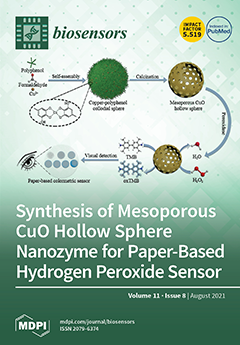B
3 is the most common subtype of blood group B in the Taiwanese population, and most of the B
3 individuals in the Taiwanese population have the IVS3 + 5 G > A (rs55852701) gene variation. Additionally, a typical mixed field agglutination
[...] Read more.
B
3 is the most common subtype of blood group B in the Taiwanese population, and most of the B
3 individuals in the Taiwanese population have the IVS3 + 5 G > A (rs55852701) gene variation. Additionally, a typical mixed field agglutination is observed when the B
3 subtype is tested with anti-B antibody or anti-AB antibody. The molecular biology of the gene variation in the B
3 subtype has been identified, however, the mechanism of the mixed field agglutination caused by the type B
3 blood samples is still unclear. Therefore, the purpose of this study was to understand the reason for the mixed field agglutination caused by B
3. A micro-droplet platform was used to observe the agglutination of type B and type B
3 blood samples in different blood sample concentrations, antibody concentrations, and at reaction times. We found that the agglutination reaction in every droplet slowed down with an increase in the dilution ratio of blood sample and antibody, whether type B blood or type B
3 blood was used. However, as the reaction time increased, the complete agglutination in the droplet was seen in type B blood, while the mixed field agglutination still occurred in B
3 within 1 min. In addition, the degree of agglutination was similar in each droplet, which showed high reproducibility. As a result, we inferred that there are two types of cells in the B
3 subtype that simultaneously create a mixed field agglutination, rather than each red blood cell carrying a small amount of antigen, resulting in less agglutination.
Full article






